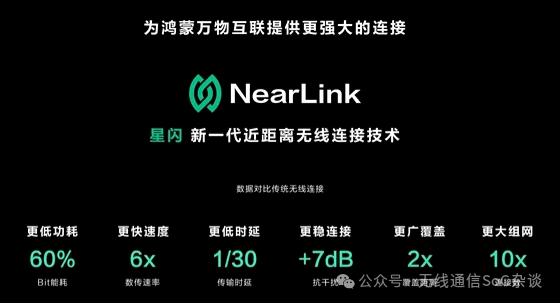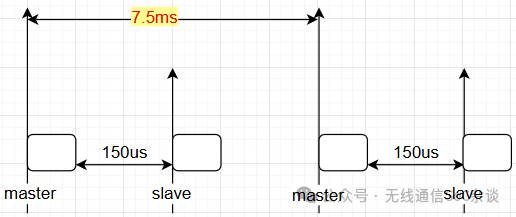The BLE protocol is established by the Bluetooth Special Interest Group and is widely used in short-range communication fields with low power requirements, such as smartwatches, fitness bands, smart lighting, and mice. The protocol is relatively mature. The SparkLink technology, introduced by Huawei, is a new wireless communication standard, with the SLE (SparkLink Low Energy) integrating some advantages of traditional Bluetooth, BLE, and Wi-Fi. The protocol design is relatively new and more advanced.Below are some comparisons between the BLE and SLE protocols: Official statements indicate that SLE has significant advantages over BLE, mainly in terms of power consumption, speed, latency, and connection range.
Official statements indicate that SLE has significant advantages over BLE, mainly in terms of power consumption, speed, latency, and connection range.
- Lower Power Consumption This does not refer to hardware power consumption, but rather the power required to transmit 1 bit of information.
- Higher Speed The maximum physical layer rate of BLE is 2 Mbps. If SLE uses MCS12, which is 8PSK + 4M symbol rate, the physical layer rate is 12 Mbps, exactly 6 times that of BLE.
- Lower Latency The minimum connection interval required by BLE is 7.5 ms (at 1M transmission rate).
 The minimum interval for SLE is 250 us (with a 4M symbol/s and 50 us packet length).
The minimum interval for SLE is 250 us (with a 4M symbol/s and 50 us packet length). Therefore, it is believed that SLE’s latency is 1/30th that of BLE.
Therefore, it is believed that SLE’s latency is 1/30th that of BLE. - More Stable Connections Because SLE uses polar codes, at the same rate, for example, at 2 Mbps, it can improve demodulation gain by 7 dB (in practice, BLE also has coding gain at a rate of 125 bps, but it does not reach SLE’s 2 Mbps).
- Wider Coverage By increasing the transmission power by 6 dB, the transmission distance can be doubled. For both BLE and SLE, if the same transmission power is used, due to the gain from polar codes in SLE, the transmission distance can be increased by 2 times.
- Larger Networking Capability SLE has added a network layer and transport layer, allowing for bidirectional multicast transmission, and G nodes can connect to up to 256 T nodes.